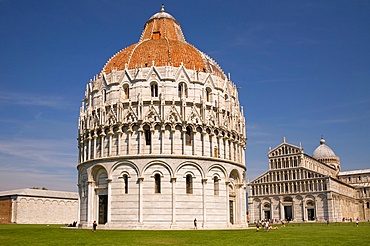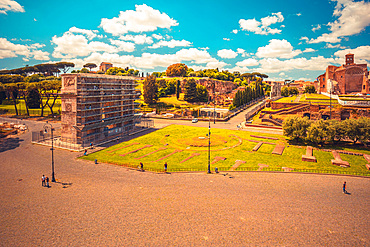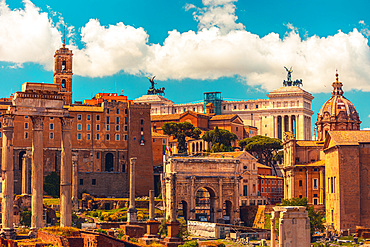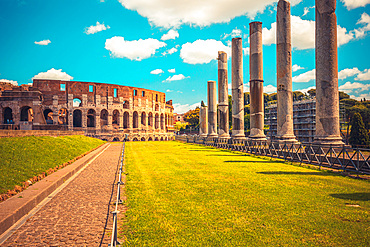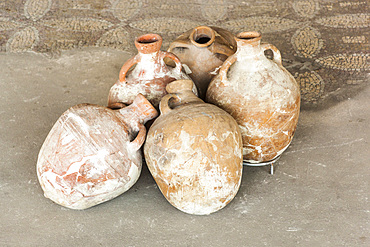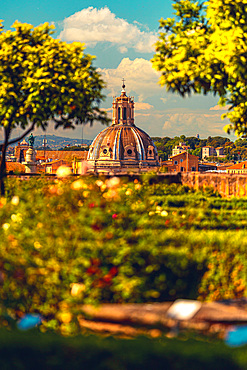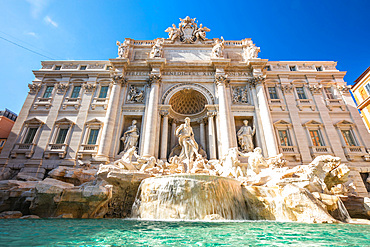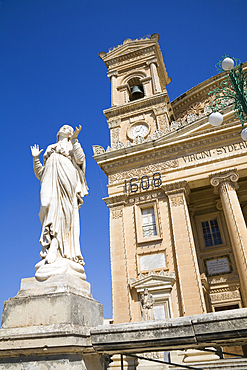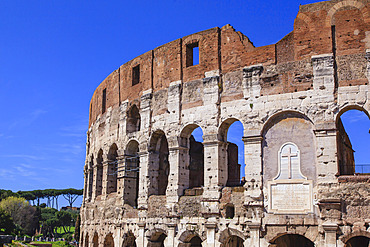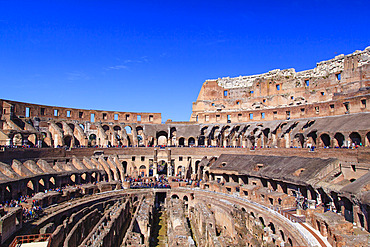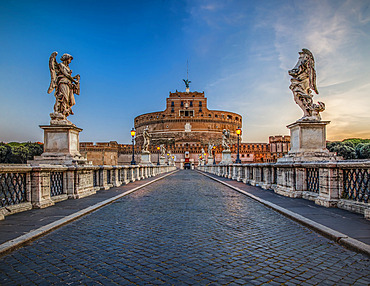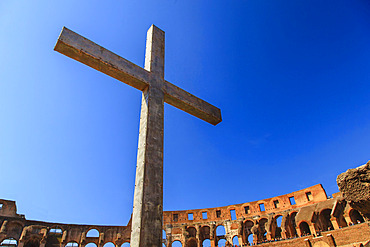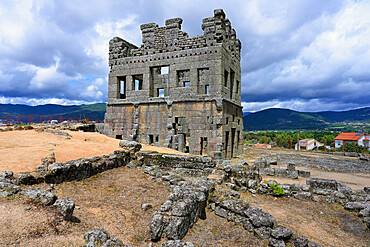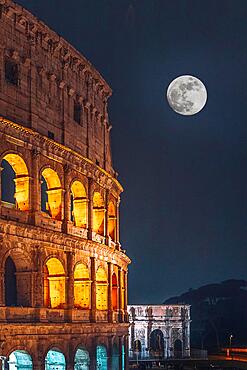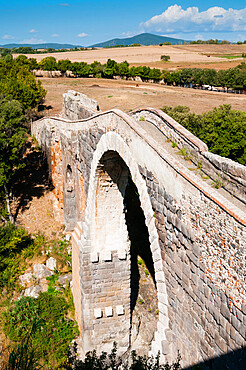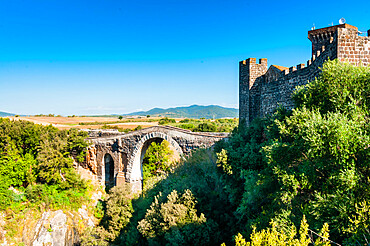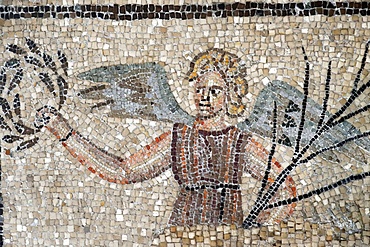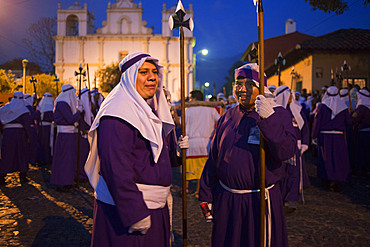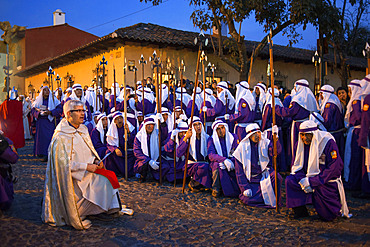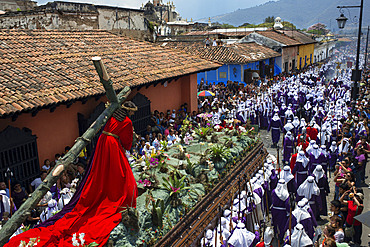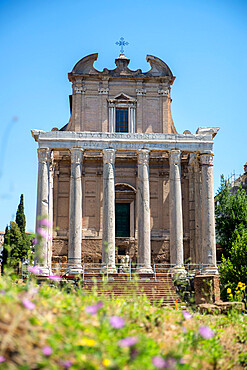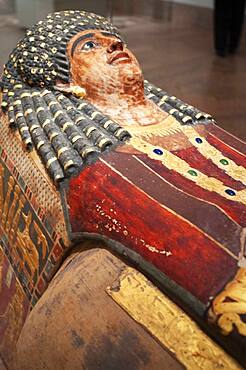Recent searches
Loading...
1350-5017 - The baptistry and cathedral, Piazza del Duomo, Pisa, Tuscany, Italy
1350-5027 - The Doric Temple, Segesta Archaeological Site, Segesta, Province of Trapani, Sicily, Italy
746-90148 - Beautiful panorama view on Altar of the Fatherland and Church of Santi Luca and Martina, Rome, Italy, Europe
746-90160 - The statue of the Capitoline Wolf with Romulus and Remus and the Coliseum in background, Rome, Lazio, Italy, Europe
746-90139 - High view of the Arch of Constantine under restoration, Italy, Europe
1350-4996 - Archaeological site of a Roman bath, beside the National Gardens and Zappeion, Athens, Greece
746-90137 - Front view of Colosseum during a sunny day, Rome, Italy, Europe
746-90155 - Gardens of Farnese upon the Palatine with beautiful panorama view on Rome, Italy, Europe
1350-4963 - Altar of Hieron II, Neapolis Archaeological Park, Syracuse, Sicily, Italy
1350-4917 - The Roman Amphitheatre, Neapolis Archaeological Park, Syracuse, Sicily, Italy
746-90147 - Beautiful panorama view on Altar of the Fatherland and Church of Santi Luca and Martina, Roman Forums and green gardens
1350-4872 - A large room within one of the terrace houses, Ephesus, Turkey
746-90140 - Roman roads upon the Palatine Hill with beautiful view on Coliseum in background, Rome, Lazio, Italy, Europe
1350-4941 - Ceramic pots in the Roman Mosaic Museum, also known as the Roman Edifice, Constanta, Romania
746-90151 - Bell tower in background, Rome, Italy, Europe
1350-4689 - Statue of Neptune, Market Place, near Silver Street, Durham, County Durham, England
746-90154 - Gardens of Farnese upon the Palatine with beautiful panorama view on Rome, Italy, Europe
746-90644 - Santa Croce church, Florence, Tuscany; Italy, Europe
746-90132 - Trevi Fountain in Rome, Italy, Italy, Europe
746-90057 - The Ponte dei Saraceni or Carcaci is a stone bridge probably dating back to the Roman period and rebuilt and modified in the 12th century over the Simeto river, Sicily, Adrano, Catania, Italy, Europe
1350-4900 - Statue of Pope Pius the ninth, Saint Peter's Square, Piazza San Pietro, Vatican City, Rome, Italy
1350-4729 - Parish Church of the Assumption of the Blessed Virgin Mary, also known as Church of Saint Mary, Mosta, Malta
1350-5053 - The Doric Temple, Segesta Archaeological Site, Segesta, Province of Trapani, Sicily, Italy
1350-5113 - Archaeological site of a Roman bath, beside the National Gardens and Zappeion, Athens, Greece
832-394910 - Garden in the Roman Baths, Sanssouci Park World Heritage Site, Potsdam, Brandenburg, Germany, Europe
832-393800 - Centum Cellas, Roman villa, 1st century AD, Mount of Santo Antao village, Belmonte, Castelo Branco district, Beira, Portugal, Europe
1116-52009 - Close-up view of the iconic Colosseum against a blue sky, showing a marble plaque above the East Entrance dedicated to Christian martyrs; Rome, Lazio, Italy
1116-52008 - Ponte Sant'Angelo spanning the Tiber River and lined with statues of angels illuminated by lampposts at dusk and leading to the Castel Sant'Angelo (Mausoleum of Hadrian); Rome, Lazio, Italy
1116-52010 - Overview of the inside of the iconic Colosseum against a blue sky with crowds of tourists sightseeing; Rome, Lazio, Italy
1116-52012 - Close-up view of the iconic Colosseum against a blue sky; Rome, Lazio, Italy
1116-50975 - View of the ancient Roman aqueduct bridge, Pont du Gard; Gard, France
1116-52013 - St Peter's Basilica in St Peter's Square at night in Vatican City; Rome, Lazio, Italy
1116-50762 - Kiosk of Qertassi, Kalabsha, UNESCO World Heritage Site, near Aswan; Egypt
1116-52007 - Ponte Sant'Angelo spanning the Tiber River and lined with statues of angels leading to the Castel Sant'Angelo (Mausoleum of Hadrian) at dusk; Rome, Lazio, Italy
1116-52011 - Close-up of a Christian cross inside the Roman Colosseum against a blue sky, erected by the Pope in 2000 to commemorate Christian Martyrs; Rome, Lazio, Italy
1116-50744 - Hathor Headed Column, Kiosk of Qertassi, Kalabsha, UNESCO World Heritage Site, near Aswan; Egypt
1116-52002 - The Fountain of Neptune in the middle of Piazza della Signoria in front of the Palazzo Vecchio in the Old Quarter; Florence, Tuscany, Italy
1131-1659 - Centum Cellas, Roman villa, 1st century AD, Mount of Santo Antao village, Belmonte, Castelo Branco district, Beira, Portugal, Europe
1113-106325 - Aerial view from the Roman amphitheater Pula Arena, Pula, Istria, Croatia, Europe
832-393613 - The Colosseum illuminated at night, Rome, Italy, Europe
832-393614 - The Colosseum illuminated at night, full moon, Rome, Italy, Europe
832-393333 - Roman columns, ruins of the Roman healing temple Asklepieion, Kos, Dodecanese, Greece, Europe
832-393622 - The Colosseum with palm tree, illuminated at night, Rome, Italy, Europe
832-393620 - The Colosseum with reflection, puddle, sunrise, Rome, Italy, Europe
832-393499 - Roman amphitheatre carved out of the tufa, Sutri, Viterbo Province, Lazio Region, Italy, Europe
832-393498 - Roman amphitheatre carved out of the tufa, Sutri, Viterbo Province, Lazio Region, Italy, Europe
765-2265 - Roman Bridge of the Devil, River Fiora, Vulci, Province of Viterbo, Lazio, Maremma, Italy, Europe
765-2267 - Roman Bridge of the Devil, River Fiora, Vulci, Province of Viterbo, Lazio, Maremma, Italy, Europe
765-2268 - Roman Bridge of the Devil, Vulci, Province of Viterbo, Lazio, Maremma, Italy, Europe
765-2269 - Roman Bridge of the Devil, Vulci, Province of Viterbo, Latium, Maremma, Italy, Europe
809-8340 - Corinthian columns of Roman Temple of Diana, Evora, UNESCO World Heritage Site, Alentejo, Portugal, Europe
809-8268 - Mosaic floor, 4th century, a Christian mosaic version of Victoria, Roman goddess of Victory, Basilica of Aquileia, UNESCO World Heritage Site, Aquileia, Friuli Venezia Giulia, Italy, Europe
1350-3758 - Easter Holy Week procession in Antigua, Guatemala. Jesus Nazareno de la Penitencia Procession in Antigua, Guatemala. Holy Week, friday.
1350-2688 - Verges, a small town in the Northeast of Catalonia (Spain), during Easter celebrates the Procession of Verges with skeletons dancing on the sound of a drum, Roman soldiers, known as the 'Manages', and a representation of the life and crucifixion of Jesus Christ. The Procession features the Dance of Death, a tradition from the Middle Age associated with epidemics and plagues and the only one remaining in Spain Ten skeletons dance to the beat of a drum to remember that no one is exempt of death. The backdrop of the medieval walls and towers of Verges is key to this macabre staging.
1350-2706 - Ruins of Laodicea on the Lycus, an ancient city built on the river Lycus
1350-3754 - A boy spreads incense at the Jesus Nazareno del Perdon procession during Easter Holy Week in Antigua Guatemala. Holy Week (Semana Santa) carpet of colored sawdust (alfombras) being prepared on Antigua street. Jesus Nazareno de la Penitencia Procession in Antigua, Guatemala.
1350-2693 - Verges, a small town in the Northeast of Catalonia (Spain), during Easter celebrates the Procession of Verges with skeletons dancing on the sound of a drum, Roman soldiers, known as the 'Manages', and a representation of the life and crucifixion of Jesus Christ. The Procession features the Dance of Death, a tradition from the Middle Age associated with epidemics and plagues and the only one remaining in Spain Ten skeletons dance to the beat of a drum to remember that no one is exempt of death. The backdrop of the medieval walls and towers of Verges is key to this macabre staging.
1350-2692 - Verges, a small town in the Northeast of Catalonia (Spain), during Easter celebrates the Procession of Verges with skeletons dancing on the sound of a drum, Roman soldiers, known as the 'Manages', and a representation of the life and crucifixion of Jesus Christ. The Procession features the Dance of Death, a tradition from the Middle Age associated with epidemics and plagues and the only one remaining in Spain Ten skeletons dance to the beat of a drum to remember that no one is exempt of death. The backdrop of the medieval walls and towers of Verges is key to this macabre staging.
1350-2695 - Verges, a small town in the Northeast of Catalonia (Spain), during Easter celebrates the Procession of Verges with skeletons dancing on the sound of a drum, Roman soldiers, known as the 'Manages', and a representation of the life and crucifixion of Jesus Christ. The Procession features the Dance of Death, a tradition from the Middle Age associated with epidemics and plagues and the only one remaining in Spain Ten skeletons dance to the beat of a drum to remember that no one is exempt of death. The backdrop of the medieval walls and towers of Verges is key to this macabre staging.
1350-3760 - Easter Holy Week procession in Antigua, Guatemala. Jesus Nazareno de la Penitencia Procession in Antigua, Guatemala. Holy Week, friday.
1350-2682 - Blessed Ludovica Albertoni sculpture frome Bernini in San Francesco a Ripa church
1350-2690 - Verges, a small town in the Northeast of Catalonia (Spain), during Easter celebrates the Procession of Verges with skeletons dancing on the sound of a drum, Roman soldiers, known as the 'Manages', and a representation of the life and crucifixion of Jesus Christ. The Procession features the Dance of Death, a tradition from the Middle Age associated with epidemics and plagues and the only one remaining in Spain Ten skeletons dance to the beat of a drum to remember that no one is exempt of death. The backdrop of the medieval walls and towers of Verges is key to this macabre staging.
1350-2691 - Verges, a small town in the Northeast of Catalonia (Spain), during Easter celebrates the Procession of Verges with skeletons dancing on the sound of a drum, Roman soldiers, known as the 'Manages', and a representation of the life and crucifixion of Jesus Christ. The Procession features the Dance of Death, a tradition from the Middle Age associated with epidemics and plagues and the only one remaining in Spain Ten skeletons dance to the beat of a drum to remember that no one is exempt of death. The backdrop of the medieval walls and towers of Verges is key to this macabre staging.
1350-2687 - Verges, a small town in the Northeast of Catalonia (Spain), during Easter celebrates the Procession of Verges with skeletons dancing on the sound of a drum, Roman soldiers, known as the 'Manages', and a representation of the life and crucifixion of Jesus Christ. The Procession features the Dance of Death, a tradition from the Middle Age associated with epidemics and plagues and the only one remaining in Spain Ten skeletons dance to the beat of a drum to remember that no one is exempt of death. The backdrop of the medieval walls and towers of Verges is key to this macabre staging.
1350-3763 - Easter Holy Week procession in Antigua, Guatemala. Jesus Nazareno de la Penitencia Procession in Antigua, Guatemala. Holy Week, friday.
1350-2689 - Verges, a small town in the Northeast of Catalonia (Spain), during Easter celebrates the Procession of Verges with skeletons dancing on the sound of a drum, Roman soldiers, known as the 'Manages', and a representation of the life and crucifixion of Jesus Christ. The Procession features the Dance of Death, a tradition from the Middle Age associated with epidemics and plagues and the only one remaining in Spain Ten skeletons dance to the beat of a drum to remember that no one is exempt of death. The backdrop of the medieval walls and towers of Verges is key to this macabre staging.
1350-2696 - Verges, a small town in the Northeast of Catalonia (Spain), during Easter celebrates the Procession of Verges with skeletons dancing on the sound of a drum, Roman soldiers, known as the 'Manages', and a representation of the life and crucifixion of Jesus Christ. The Procession features the Dance of Death, a tradition from the Middle Age associated with epidemics and plagues and the only one remaining in Spain Ten skeletons dance to the beat of a drum to remember that no one is exempt of death. The backdrop of the medieval walls and towers of Verges is key to this macabre staging.
1350-2697 - Verges, a small town in the Northeast of Catalonia (Spain), during Easter celebrates the Procession of Verges with skeletons dancing on the sound of a drum, Roman soldiers, known as the 'Manages', and a representation of the life and crucifixion of Jesus Christ. The Procession features the Dance of Death, a tradition from the Middle Age associated with epidemics and plagues and the only one remaining in Spain Ten skeletons dance to the beat of a drum to remember that no one is exempt of death. The backdrop of the medieval walls and towers of Verges is key to this macabre staging.
1350-2694 - Verges, a small town in the Northeast of Catalonia (Spain), during Easter celebrates the Procession of Verges with skeletons dancing on the sound of a drum, Roman soldiers, known as the 'Manages', and a representation of the life and crucifixion of Jesus Christ. The Procession features the Dance of Death, a tradition from the Middle Age associated with epidemics and plagues and the only one remaining in Spain Ten skeletons dance to the beat of a drum to remember that no one is exempt of death. The backdrop of the medieval walls and towers of Verges is key to this macabre staging.
1341-261 - Roman bridge, Cangas de Onis, Asturias, Spain, Europe
397-1597 - The Roman Catholic Cathedral, Liverpool, Merseyside, England, United Kingdom, Europe
698-2067 - Roman Catholic Metropolitan Cathedral, Liverpool, Merseyside, England, United Kingdom, Europe
1351-12 - Whole cityscape of Spoleto, with the Roman aqueduct, the fortress and the old town, Spoleto, Umbria, Italy, Europe
1351-9 - The Roman aqueduct of Perugia at sunset, one of the main attractions of the old town, Perugia, Umbria, Italy, Europe
832-393086 - Piazza Bra with Roman amphitheatres Arena di Verona in the evening, Piazza Bra, Verona, Veneto, Italy, Europe
832-393087 - Piazza Bra with Roman amphitheatres Arena di Verona in the evening, Piazza Bra, Verona, Veneto, Italy, Europe
832-392131 - Grandstands and partially restored arena, stage in interior of Colosseum, Rome, Lazio, Italy, Europe
832-392756 - Corridor at the entrance to the Roman temple, Acropolis of Lindos, Lindos, Rhodes, Dodecanese, Greece, Europe
832-393074 - Tiberius Claudius Caesar Augustus Germanicus, Roman Museum, Bedaium, Seebruck, Chiemsee, Chiemgau, Upper Bavaria, Bavaria, Germany, Europe
832-393084 - Roman amphitheater Arena di Verona in the evening, Piazza Bra, Verona, Veneto, Italy, Europe
832-392761 - Roman columns, Roman temple, Acropolis of Lindos, Lindos, Rhodes, Dodecanese, Greece, Europe
832-392760 - Roman columns, Roman temple, Acropolis of Lindos, Lindos, Rhodes, Dodecanese, Greece, Europe
832-392759 - Roman columns, Roman temple, Acropolis of Lindos, back Paulus Bay, Lindos, Rhodes, Dodecanese, Greece, Europe
832-393083 - Piazza Bra with Roman amphitheatres Arena di Verona in the evening, Piazza Bra, Verona, Veneto, Italy, Europe
832-393073 - Roman Museum, Bedaium, Seebruck, Chiemsee, Chiemgau, Upper Bavaria, Bavaria, Germany, Europe
832-392513 - Courtyard with Roman mosaic, Moorish architecture, Palacio de la Condesa de Lebrija, Seville, Andalusia, Spain, Europe
832-393103 - City square Piazza delle Erbe and former Roman Forum with fountain Fontana Madonna Verona in the evening, Piazza Erbe, Verona, Veneto, Italy, Europe
832-393085 - Roman amphitheater Arena di Verona in the evening, Piazza Bra, Verona, Veneto, Italy, Europe
1341-180 - Temple of Antoninus and Faustina, Roman Forum, UNESCO World Heritage Site, Rome, Lazio, Italy, Europe
1341-184 - Pantheon interior, UNESCO World Heritage Site, Rome, Lazio, Italy, Europe
1341-177 - Pantheon exterior, UNESCO World Heritage Site, Rome, Lazio, Italy, Europe
832-391544 - Roman arena amphitheatre with preserved medieval tower, Arles, Bouches-du-Rhone department, Provence Alpes Cote d'Azur region, Mediterranean Sea, France, Europe
1350-1178 - Entrance, Temple of Bacchus, Baalbeck, Bekaa Valley, Lebanon
1350-1179 - Roman colonnade on the top, general view of Archaeological site, Byblos, Lebanon
1350-2292 - Pont du Gard, Languedoc Roussillon region, France, Unesco World Heritage Site. Roman Aqueduct crosses the River Gardon near Vers-Pon-du-Gard Languedoc-Roussillon with 2000 year old
1350-2075 - Artemidora, A.D. 90-100. From Meir. Mummy. Metropolitan Museum of Art, New York, USA. The mask portrays a young woman lying flat as if upon her bier. Her hair is arranged in tiers of snail curls over her forehead. Alongside her face flows a black Egyptian-style wig, the long locks bound with narrow rings of gold in pharaonic fashion.
1350-1181 - Al-Mina archaeological site, Tyre (Sour), Lebanon.
1350-790 - Roman Cardo Maximus, in Roman Forum, Downtown, Beirut, Lebanon
